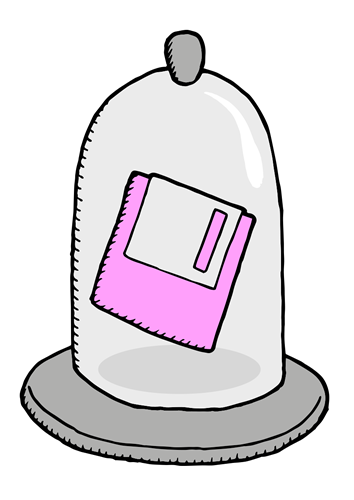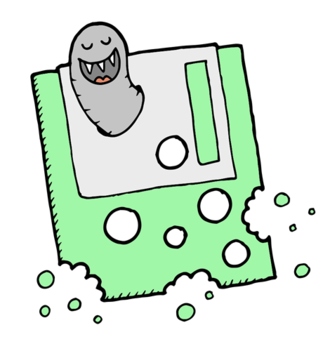About the Digital Preservation Business Case Toolkit: Difference between revisions
| Line 31: | Line 31: | ||
====How was the Toolkit created?==== | ====How was the Toolkit created?==== | ||
The structure and core of the Toolkit was created in 3 day workshop, focused on writing, that followed the format of a [http://publications.cetis.ac.uk/2013/764 Book Sprint]. The Sprint drew on an array of experience and resources that were gained throughout the first 1.5 years of the [http://wiki.opf-labs.org/display/SPR SPRUCE Project]. This included the results of business case exercises conducted with an array of practitioners from memory organisations in a number of [http://wiki.opf-labs.org/pages/viewpage.action?pageId=13041673 mashup events]. The breadth and quality of the resulting Toolkit was enhanced by writing up the results of the [http://wiki.opf-labs.org/display/SPR SPRUCE Project] work with not just one or two authors, but 13 experts from the digital preservation field. Illustrator (and former SPRUCE Practitioner) Tom Woolley worked alongside the authors to create illustrations that highlight concepts from the Toolkit. The agenda for the book sprint can be found [[BookSprint|here]] | The structure and core of the Toolkit was created in 3 day workshop, focused on writing, that followed the format of a [http://publications.cetis.ac.uk/2013/764 Book Sprint]. The Sprint drew on an array of experience and resources that were gained throughout the first 1.5 years of the [http://wiki.opf-labs.org/display/SPR SPRUCE Project]. This included the results of business case exercises conducted with an array of practitioners from memory organisations in a number of [http://wiki.opf-labs.org/pages/viewpage.action?pageId=13041673 mashup events]. The breadth and quality of the resulting Toolkit was enhanced by writing up the results of the [http://wiki.opf-labs.org/display/SPR SPRUCE Project] work with not just one or two authors, but 13 experts from the digital preservation field. Illustrator (and former SPRUCE Practitioner) Tom Woolley worked alongside the authors to create illustrations that highlight concepts from the Toolkit. The agenda for the book sprint can be found [[BookSprint|here]]. | ||
====What is the status of the Toolkit?==== | ====What is the status of the Toolkit?==== | ||
The Toolkit is currently under development. As of 2/8/2013 the majority of the text is complete following the [http://wiki.opf-labs.org/display/SPR SPRUCE Project] Book Sprint, and a process of filling in gaps, editing and adding illustrations is underway. | The Toolkit is currently under development. As of 2/8/2013 the majority of the text is complete following the [http://wiki.opf-labs.org/display/SPR SPRUCE Project] Book Sprint, and a process of filling in gaps, editing and adding illustrations is underway. | ||
Revision as of 13:19, 4 August 2013
What is the Digital Preservation Business Case Toolkit?
This Toolkit provides an in depth guide to writing a business case that is focused on digital preservation activities. If an organisation would like to change, adapt or expand its activities in a way that requires additional resources, it's typical for senior management to request a business case be prepared. The business case will outline what resources are required, what the resource will be used to achieve and how this new investment will benefit the organisation. This Toolkit provides an array of resources to help in the construction of a business case, from planning and preparation all the way through to polishing and communicating the finished case.
Who is this toolkit for?
This Toolkit is for anyone who would like to create a business case focused on digital preservation. It's targeted primarily at practitioners (and their managers) who are working with digital resources and would like to obtain funds to expand their digital preservation activities. The Toolkit is primarily aimed at those seeking further funds from within their organisation, but could also provide useful information for those writing a bid for project funds from an external funding body.
Credits, acknowledgements and thanks
This Toolkit was created by the Jisc funded SPRUCE Project.
Thanks go out to the digital preservation experts who wrote the Toolkit in a SPRUCE Project Book Sprint:
- Paul Wheatley, University of Leeds and the SPRUCE Project (Book Sprint Facilitator)
- Bo Middleton, University of Leeds and the SPRUCE Project (Book Sprint Facilitator)
- William Kilbride, Digital Preservation Coalition and the SPRUCE Project
- Bram van der Werf, Open Planets Foundation and the SPRUCE Project
- Susan Reilly, LIBER (External Sprint Representative)
- Ed Fay, London School of Economics and the SPRUCE Project
- Rachel MacGregor, The Library of Birmingham (SPRUCE Practitioner)
- Thom Carter, London School of Economics (SPRUCE Practitioner)
- Neil Grindley, Jisc and the SPRUCE Project
- Maureen Pennock, British Library and the SPRUCE Project
- Jodie Double, University of Leeds and the SPRUCE Project
- Beccy Shipman, University of Leeds and the SPRUCE Project
- Tom Woolley, Curve Agency (Book Sprint Illustrator and SPRUCE Practitioner)
Thanks go to the many practitioners and developers who took part in the SPRUCE Project Mashups which provided much of the valuable resources and foundation used to build this Toolkit. And thanks also go to the many others who have supported and contributed to SPRUCE and this Toolkit.
How was the Toolkit created?
The structure and core of the Toolkit was created in 3 day workshop, focused on writing, that followed the format of a Book Sprint. The Sprint drew on an array of experience and resources that were gained throughout the first 1.5 years of the SPRUCE Project. This included the results of business case exercises conducted with an array of practitioners from memory organisations in a number of mashup events. The breadth and quality of the resulting Toolkit was enhanced by writing up the results of the SPRUCE Project work with not just one or two authors, but 13 experts from the digital preservation field. Illustrator (and former SPRUCE Practitioner) Tom Woolley worked alongside the authors to create illustrations that highlight concepts from the Toolkit. The agenda for the book sprint can be found here.
What is the status of the Toolkit?
The Toolkit is currently under development. As of 2/8/2013 the majority of the text is complete following the SPRUCE Project Book Sprint, and a process of filling in gaps, editing and adding illustrations is underway.

